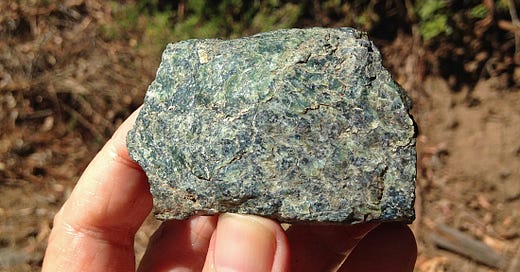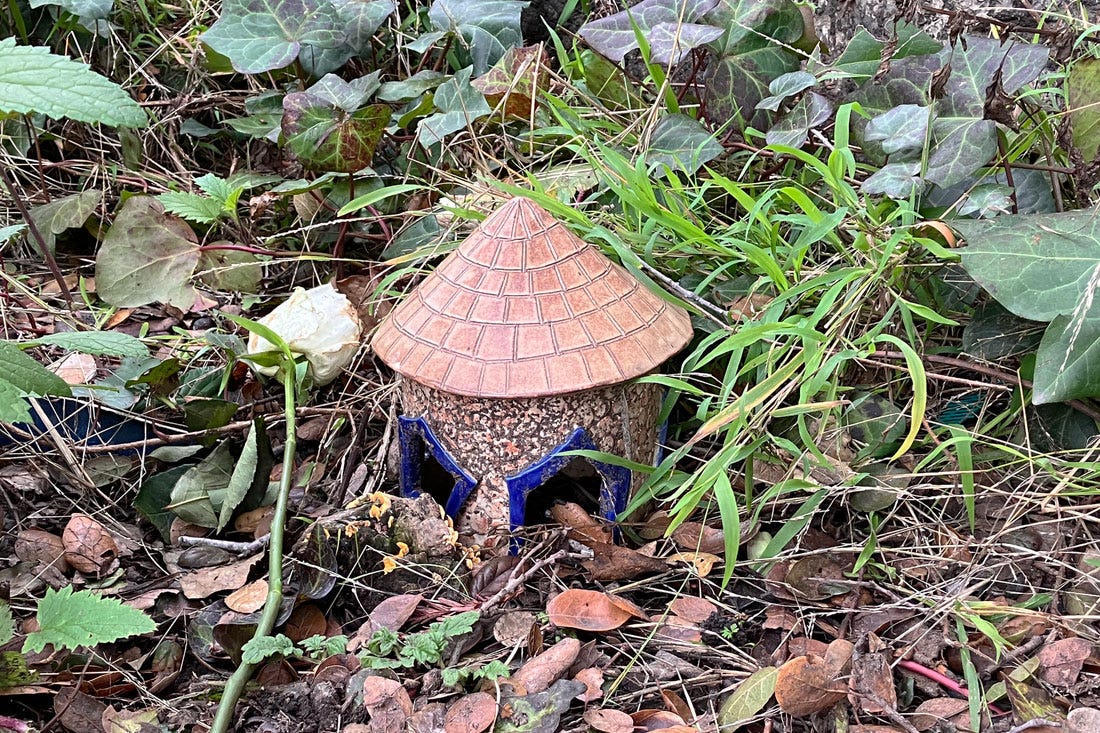Hello Subscribers,
Early in Deep Oakland I say that over the human history of our landscape, “this place has differed with each set of eyes that beheld it.” The Ohlones lived in it; the Spanish colonists and Mexican ranchers and initial American businesses lived off it; and today most of us simply live on it. These three respective waves of people saw this territory as a world to belong to, a resource to take advantage of, and an address to stay at.
The three waves of residents experienced our landscape at different scales, too. The Ohlones traveled on foot, or in small reed boats, their whole lives. Most of them may not have gone more than maybe ten miles in any direction. (This is not to say their world was small. The views from the hilltops are vast and the news among the tribes traveled far.) The newcomers rode horses and sailing ships. Later still they rode trains and steamships and self-propelled wagons—automobiles. Finally they took to the air like birds, and now we can all look down from outer space like angels.
I’ve made a point of visiting as much of the city as I can on foot, the way the Ohlones did. Even a bicycle, miracle machine though it is, puts one at a distance from the terrain. Too much attention is drawn toward propulsion and navigation at the expense of perception. Cars of course are even more distancing. Yet the Newtonian motion of vehicles, acceleration in absolute space, offers its own holistic grasp of landscape by speeding up perspective. The point is to be an observant passenger, paying close attention, rather than a driver. I find watching the landscape from the bus or BART or the train mesmerizing, and I don’t endanger anyone by swivelling my head or hitting the brakes at a choice roadcut.
The vantage afforded by airplanes is a great privilege of our time, and the reason I favor a window seat whenever I need to fly. But I think the greatest advance of my lifetime is the ability to see the land, and play with it in 3D, in Google Earth and similar settings. We have the ability to turn the planet over in our hands as if it were a pebble. With that, we can toy with ideas at every scale from the macrocosm to the finest detail of microscopic crystals. It all serves to enrich what I see the Ohlone way, on foot.
March Events
I’ve scheduled a walk into Castle Canyon for the Friends of Sausal Creek in early May, but you can avoid the rush (and see a different set of blooming vegetation) by joining me a week from Saturday, on March 8th, when I’ll lead a maximum of 20 people over the same route. It’s free. Details and registration here. As of this morning there were still six slots open. Don’t despair if it’s sold out because I’ve urged people to give their tickets back if they cancel. And there’s always the May walk through Friends of Sausal Creek.
I looked at the “geology walks” category on deepoakland.com and decided it was time to organize the entries—there are nearly fifty—into a handy annotated list. Many of them fall into handy categories. For instance, in the early 2010s I took some of the walks in Charles Fleming’s Secret Stairs East Bay and pointed out the geological features along the way. There are eight of those. I’ve also published eight formal “rambles” so far, which are one-way hikes from one bus stop to another, plus a handful of others that qualify. There are eight circumambulations—arbitrary round trips around a geographic feature—and a couple of posts devoted to different bus lines, with a third ready to drop on Monday 3 March. See the list here.
Look at This
Jim sent me photos from Horseshoe Canyon, the surprisingly rugged gulch that forms the heart of Oakland’s Leona Heights Park. A freshly tumbled boulder displayed a green surface coating on the familiar butterscotch-colored rock of the Leona volcanics. Could it be a copper mineral, he wondered.
That wasn’t a bad guess. In the pyrite-rich rocks of Leona Heights, natural processes used to deposit various copper minerals at shallow depths underground, where water and air alchemized the pyrite content and concentrated its impurities of copper and silver. Copper sulfate and carbonate minerals commonly take greenish colors. One of these, boothite, was first described in the scientific literature from an occurrence in Leona Heights.
The possibility was so attractive I had to see. But it was clear that the green is the green of chlorophyll, and the fact that the liquid from my acid dropper rolled off it showed it to be a film of lichen, not a mineral at all.
You can show your support for Deeper Oakland through my Buy Me A Coffee account
Book News
I’ve been told that the hardbound edition of Deep Oakland is selling so well the publisher’s stock will probably be gone before the paperback comes out in May. At that point, whatever stock the bookstores have on hand is all there will ever be. Of course you could buy a copy secondhand; I’m all for that even though it earns me nothing extra. But all is not lost, because I have laid in a supply of hardbacks that should last a while.
Dismay
I can hardly take what’s happening in Washington DC, for many reasons, but one is personal. I come from a public-sector family: both of my grandfathers, my dad, and all five of my siblings—and my wife and her parents—have had jobs, even whole careers in public service both civilian and military. As a teen I had summer jobs working for the city and county; after college I put in ten years with the US Geological Survey. Working for the good of the community, carrying out one of the many missions defined by our democratic government, from collecting garbage to countering crime, is a noble cause. Of course working for a business or oneself is rewarding (and I’ve done both), but there’s a satisfaction in public service that the private sector can’t deliver. Listen to the people speaking up about the federal jobs they just lost without warning or due process.
The assault upon the public service workforce by its new overseers—their open, gleeful hostility to it—is jarring, galling and tragic. It’s also very dangerous. I mourn this loss every day.
Earlier this week a USGS scientist spoke to my local geological society. He still had a job, but his government credit card was limited to one dollar and his travel was curtailed, even though he’s committed to lead a daylong field trip in April that I’ve signed up and paid for. I asked if he couldn’t just take vacation and show up anyway, and he said he’d still be representing his agency. Our speakers from the USGS can’t even accept dinner or gas money from us; we give them a society-labeled coffee mug and that’s it. This guy, like all of his peers at the USGS, has more integrity than the world’s richest person and his underling in the White House.
What helps me cope? Getting out in the world and bathing my senses in it.
I read an interview with the science writer Ed Yong, who recently moved to Oakland and had a wake-up moment on the boardwalk at Arrowhead Marsh, watching birds and really seeing them for the first time:
“I’ve been writing about animals since I’ve been writing about anything, but a lot of my knowledge of the natural world, if you want to be reductive, it’s just trivia. Whereas the knowledge I gained from birding, that started on that boardwalk, feels rooted in the lives of the birds themselves in time and space. I look at the birds, and I see how they behave. Small things that I would never have noticed if I was just reading scientific publications. Those two halves, the academic side and the more lived knowledge, beautifully interact with each other. And the thing that I felt palpably at that place on that day, that I still do every time I go birding, is this incredible sense of being present.”
He describes my own mind as I discovered Oakland’s rocks and landforms, and my own experience whenever I go out. Read the whole interview here (gift link). Yong’s monthly newsletter features some of his remarkable photographs of birds, many from local places.
To quote a favorite poet, I do not say these things for a dollar, or to fill up the time while I wait for a boat. I say them in hopes you may find the same measure of relief I feel on your own feet, out upon our landscape.
As always, thanks for reading.
Andrew







You know, I forgot to mention my two February blog posts. "Orinda the landslide city" explains why that tiny suburb deserves the ominous title, and The Leona Heights Quarry site" sums up a lot of research about the roughed-up land next to Merritt College and why I like it so much.
https://oaklandgeology.com/2025/02/03/orinda-the-landslide-city/
https://oaklandgeology.com/2025/02/17/the-leona-heights-quarry-site/